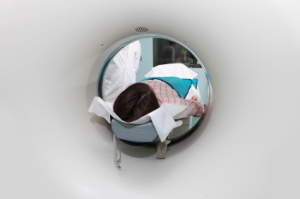by
Astrid Fiano, DOTmed News Writer | March 04, 2010

Meeting will focus on
CT, fluoroscopy safety
In the latest government initiative regarding growing concern over medical radiation overexposure, the U.S Food and Drug Administration (FDA) is planning to hold a public meeting entitled: "Device Improvements to Reduce Unnecessary Radiation Exposure From Medical Imaging." According to the notice now in the Federal Register, the two-day meeting -- March 30 and 31 -- will discuss steps manufacturers of devices used in computed tomography (CT) and fluoroscopy can take that would help reduce unnecessary patient exposure to ionizing radiation during CT/fluoroscopic procedures.
Each day of the meeting will be divided into two sessions. On the first day, the focus will be on equipment features that manufacturers should incorporate into CT scanners (morning session) and fluoroscopes (afternoon session). On the second day, the topics will be on steps manufacturers can take to improve user-training of devices, and improving quality assurance at medical imaging facilities using CTs/fluoroscopes. After the sessions, the FDA will hold a round table discussion between agency staff and selected participants to provide individual perspectives.
The questions the FDA are presenting for comment include:



Ad Statistics
Times Displayed: 175492
Times Visited: 3192 For those who need to move fast and expand clinical capabilities -- and would love new equipment -- the uCT 550 Advance offers a new fully configured 80-slice CT in up to 2 weeks with routine maintenance and parts and Software Upgrades for Life™ included.
--What hardware and software features should manufacturers build into CT and fluoroscopic devices in order to reduce unnecessary exposure to ionizing radiation during each imaging exam, and in order to reduce what may be inappropriate prescription of imaging exams? Should manufacturers incorporate special provisions for pediatric and female patients?
--Should manufacturers incorporate access controls and audit capabilities into CT and fluoroscopic equipment in order to identify the user(s) of the device during any particular exam, and to identify those responsible for creating and changing imaging protocols and exposure settings? If so, why, and what access controls and audit capabilities should be incorporated? If not, why not?
--Should manufacturers incorporate warnings, alerts, lockouts, or overrides into CT and fluoroscopic equipment that would inform users and require confirmation or possibly procedure modification during an imaging session in which the patient could be exposed to high levels of radiation? If so, why, and what warnings, alerts, lockouts, or overrides should be incorporated? If not, why not?
--Should manufacturers set default imaging protocols for CT and fluoroscopic procedures so that they incorporate the ALARA concept (maintaining dose As Low As Reasonably Achievable) and utilize or provide for incorporation of diagnostic reference levels into CT and fluoroscopic devices? If so, why and how? If not, why not?

